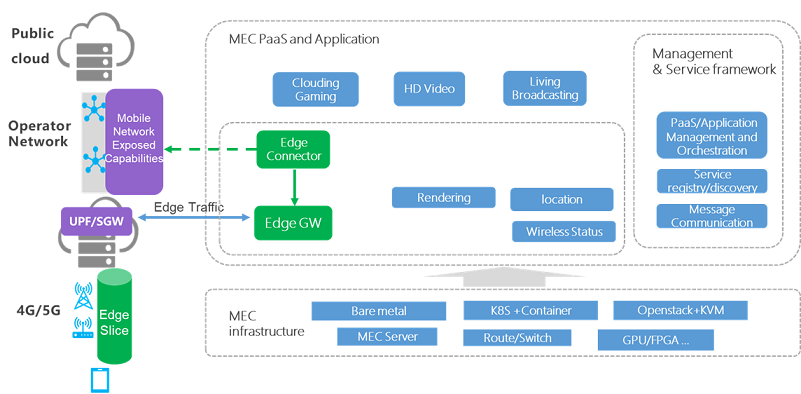| Table of Contents |
|---|
The 5G MEC BP mainly consists of two network elements,
...
Edge connector, deployed in the cloud to enable flexible traffic offloading from the aspects of control interaction with mobile network exposed capabilities, and to subscribe the edge slice between UE and edge application.
Edge gateway (GW), deployed close to the 4G/5G network edge to enable the traffic offloadingfrom the aspects of data plane with local traffic routing, traffic management, etc.
Edge Connector and Edge GW are respectively built on top of OpenNESS Edge Node and OpenNESS Controller Community Edition, with a couple of new components described in the following subsections to meet the requirements of cloud service providers (CSP).
- Offloading management: Inject offloading rules to the cellular network (e.g., LTE/CUPS, 5G) control plane.
- Telemetry: Get basic edge compute microservices telemetry from connected Edge GW.
- Application lifecycle management: Support applications through their lifecycle:
- Expose the silicon micro architecture features on CPU, Accelerator, Network interface etc. through Enhanced Platform Awareness (EPA) framework to the applications for lower overhead and high performance execution.
- Deploy edge compute applications from the image repository
- Configure the Edge compute application specific Traffic policy
- Configure the Edge compute application specific DNS policy
- Slice management: Subscribe network slice for a particular group of UEs, or any UE accessing a specific edge service.
...
- User uploads the application image (container tar.gz) to the HTTPs server. User downloads the application container image to the Edge Node.
- User initiates the Application deploy step using Kubernetes (kubectl).
...
...
